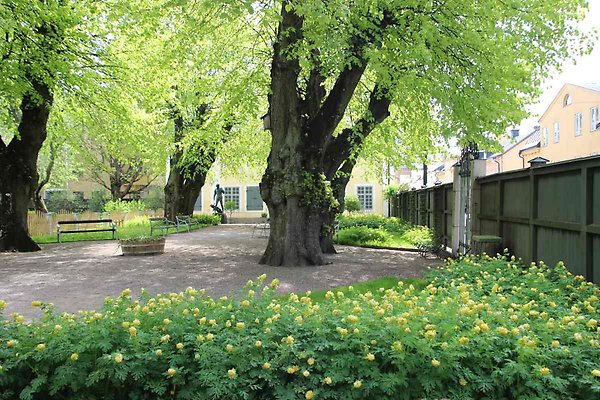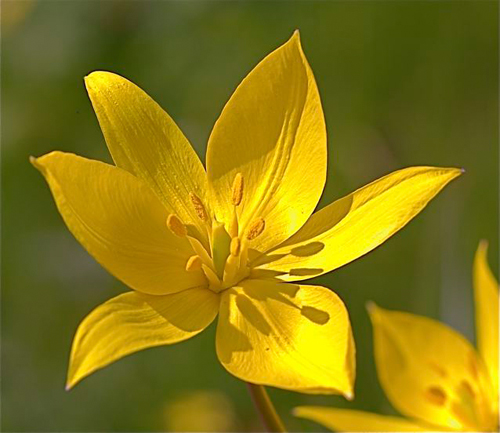Amazing plants
In the Linnaeus Garden we only grow plants that we know were grown by Linnaeus.
The plants are arranged according to Linnaeus’ sketches. The organisation of the garden reflects his Sexual System, the distinction between spring and autumn flowering plants, and different aquatic ecosystems.
Siberian corydalis - a pearl among weeds

No Bleeding Heart in Linnaeus's Garden
Carl Linnaeus really wanted to grow bleeding heart (Dicentra spectabilis) in the botanic garden. But from the seeds that he had received by letter from Russia grew Siberian corydalis (Corydalis nobilis).
The Wild Tulip - a botanical heritage

Olof Rudbeck the Elder grew the wild tulip (Tulipa sylvestris) in Sweden’s first botanic garden. Linnaeus described it almost a century later, and it is still growing in the Linnaeus Garden today. It is a rather shy-flowering species, but when the graceful flowers do appear they spread a delightful fragrance.
There are about a hundred species of tulips, but tens of thousands of cultivars. The majority of our garden tulips are assigned to Tulipa gesneriana, which is more a collection of hybrids than a true species. In Rudbeck’s botanic garden there were more than 40 varieties of tulips.
The Jonsboda lime
The tree that gave its name to Linnaeus
Carl Linnaeus’ father Nils Ingemarsson grew up in Jonsboda in Vittaryd parish in Småland. While a seminary student in Växjö he took the name Linnaeus after a lime (linden) tree that grew in a ”stone heap” on his father’s farm.
Read more about the Jonsboda Lime.
